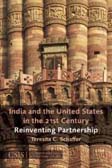An article by Teresita C. Schaffer and Sabala Baskar on security measures taken by the Indian government following the Mumbai attacks in November 2008, particularly as they pertain to Pakistan.
The November 2008 attacks in Mumbai are a reminder of the potential consequences of incidents that neither the Pakistani nor the Indian government can completely control. Specifically, the Mumbai episode demonstrated how quickly a seemingly stable India-Pakistan environment can deteriorate. Besides the familiar arguments for political leadership and persistent diplomacy between India and Pakistan, one factor in reducing this vulnerability is strengthening both governments’ means of detecting, preventing, and responding to such incidents.
Originally published in the Center for Strategic & International Studies‘ South Asia Monitor on April 7, 2009. Read the entire article.



